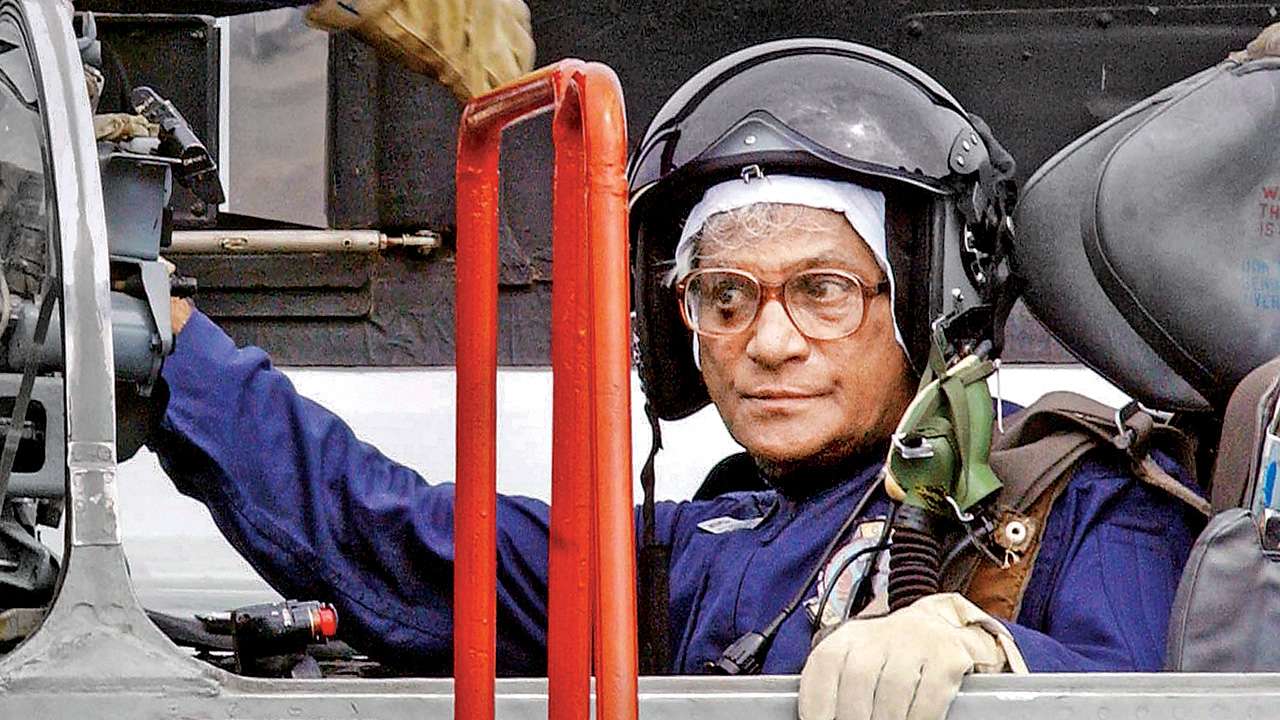
Even though spring was knocking on the doors in Kashmir, militancy-related incidents, coupled with several massacres and the exodus of Kashmiri Pandits leading to virtual dismantling of the state administration, had turned the capital of Srinagar into a ghost town.
It was late in the night on March 16, 1990, when a white Ambassador stopped near the office of a local Urdu daily in a dense locality near Lal Chowk.
A person, wrapped in a woollen cap and muffler emerged, walked the stairs and headed straight to the editor’s cabin. The editor, Mohammad Shaban Vakil, got the shock of his life to recognise his visitor — Union minister George Fenandes.
It was no easy task, even for a small time government official then, to move about in this dense locality without heavy security. The area had become a bastion for JKLF and other militant groups.
The nearby Gao Kadal area had a few months ago, witnessed one of the worst massacres — the killing of over 50 people. Across the Kashmir Valley, January 1990 alone had claimed some 300 lives.
Fernandes was making inquiries about a news report published a week earlier, alleging the rape of several women during a security operation in Chanpura on the outskirts of the city.
A starry-eyed Vakil, still grappling with the prospects of a VIP in his cabin, summoned the reporter concerned. Fernandes asked the reporter to accompany him to the locality. It was past midnight when the Union minister along with the journalist — sans any security — reached the location.
It was terrifying to move around in the dead of night. Loudspeakers of different mosques were blaring slogans. Luckily, nobody stopped the lone vehicle moving on the ghost road.
Holding a tape recorder in his hand, Fernandes met a dozen men and women. “Your daughter is my daughter and your mother is my mother,” the reporter later recalled the minister as telling an angry young man. “You will get justice, I assure you”.
A year later on April 23, 1991, Vakil was shot dead in his office by militants and many attributed it to his links with Fernandes, who was trying to revive a political process in militancy-hit Jammu and Kashmir.
Fernandes would often arrive and check in at the Railway Home at Tulsi Bagh. His close confidant, senior IAS officer of the J&K cadre, Ashok Jaitely, would arrange his meetings.
During V P Singh’s tenure, when Fernandes was appointed Special Minister to revive the political process in the state, he put in place a parallel administration, to the chagrin of then home minister Mufti Mohammad Sayeed and Governor Jagmohan.
There were even reports that the Home Minister was very close to quitting. Ved Marwah, then advisor to the Governor, said it was a perfect arrangement to deal with the situation on two tracks — administration and security by the Governor and political management by Fernandes.
But, it didn’t work. It could have worked only if George Fernandes and Jagmohan had been able to work together as a team. It took another five years to conduct elections and install a semblance of a civilian set up.
Two years later George was catapulted as India’s Defence Minister, which is closely linked to Kashmir. His friend Farooq Abdullah was the Chief Minister and Ashok Jaitley, the Chief Secretary.
In response to massacres of Hindus in the Jammu region in January 2000 and earlier in 1998, he had ordered the Special Forces to cross the LoC to take revenge, which analysts believed achieved its political-military objectives.
In 2002, when I was cooling my heals in Delhi’s Tihar Jail on trumped up charges under the Official Secrets Act (OSA) and all seemed lost, I told my wife Aanisa to meet Jaya Jaitley.
The prosecution had built the case that they had recovered a document from my computer, which was prejudicial to the security of the country and disclosed the order of battle (Orbat).
Fernandes knew of the case through media. But, when he met my wife and got the details, he was enraged and summoned the Director General of Military Intelligence (DGMI).
It appeared that the DGMI had clearly stated that the document had no security relevance and was available in the public domain. Despite our repeated pleas, the prosecution insisted on shooting from the shoulders of MI, refusing to put the original opinion before the court.
Just when the court was about to charge me on the basis of this deception, Fernandes handed over original opinion to a leading Hindi journalist, who instead of flashing it as a news story, came straight to court and passed it on to my lawyer.
The case, assiduously built up by the prosecution, crumbled. The judge had no option but to summon the DGMI and senior police and home ministry officials, to verify the DGMI’s document. The DGMI, Lt Gen OS Lochab, appeared at the next hearing and confirmed that the document, which we had submitted, was real.
Only a confident minister like Fernandes could have intervened and saved an innocent soul from rotting in the jail. He not only helped immensely in restoring my freedom, but also provided the healing touch after my release. I remember him cancelling a reception at the President’s House to receive me at his home.
He lived a simple life. I often saw him washing his own clothes and brewing tea in his kitchen. His ungated house at 3-Krishnan Menon Marg was home to Tibetan, Iranian and Burmese dissents.
Author is Chief of National Bureau, DNA